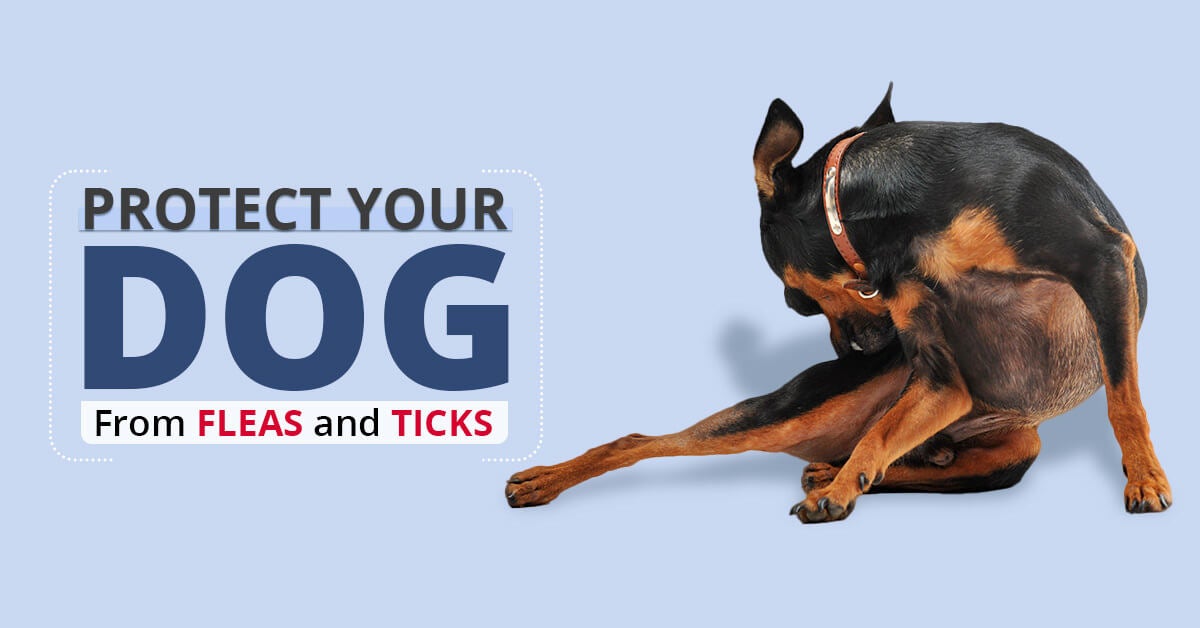Fleas and ticks are a common problem that most pet parents face, particularly in summer. It is tough to prevent a dog from fleas and ticks as their coat provides the perfect habitat for them. It’s harmful because it feeds on the dog’s blood. This can cause severe illness and even tick fever.
Fleas are generally capable of sucking up to 15 times their weight in blood in a single day. This can lead your dog to anemia. Anemia is a condition where the count of red blood cells drops drastically and can be hazardous for pups as their immunity level is considerably less.
Also read: 5 Dog Grooming Tips for Summer
Signs your dog has a tick
If your dog is affected by ticks, you might not be able to find it until they largely multiply by the number.
Ticks are infectious; they can be transferred to your pet while going on a walk or from a fellow cat or dog. However, it is also possible for the eggs to get transferred.
Here are a few symptoms to identify dog ticks and fleas at an early stage.
- Dark spots in the fur (These are flea droppings)
- Eggs in the fur
- Licking, scratching, and other kinds of discomfort
- Red spots on the skin
Read Blog: Can Dogs get Sunburns?
How do fleas affect dogs?
Fleas are extremely dangerous.
1. Flea allergy dermatitis
This is caused by fleabites and is one of the most common problems people go to vets for. It is caused by the saliva of the flea that enters your dog’s skin when they bite.
Also Read: Know the 7 Benefits of Collagen in Dogs
Frequent itching, scratching, and hair loss are the symptoms of this condition. This is generally visible on the lower back of the dog.
2. Tapeworms
If tapeworms infect the flea that bites your dog, there are high chances that your dog can get infected. When your dog licks the fleas while licking their body, they get into the dog’s system and attach themselves to the intestine. It leads to vomiting, stomach ache, etc.
3. Bartonellosis
This is caused by a bacteria called Bartonella. The veterinarians are still researching the early symptoms of this disease in dogs. Later symptoms in dogs are enlargement of the spleen, fever, swelling of lymph nodes, lameness, Inflammation of heart muscles and irritation in the nose, vomiting, cough seizures, etc.
Also Read: Dehydration in Dogs – Symptoms, Causes, and treatment
How to get rid of fleas and ticks?
Flea and tick prevention controls are essential to protect you and your family from Lyme disease or other tick-borne illnesses. Several pills, ointments, and shampoos keep your pet healthy and safe. The best thing to do is to consult your vet. Alternatively, here are a few steps that you can follow. Please do note that all dogs are not the same. What might work for one may not work for others. But here are a few simple procedures.
- Give your dog a good bath. Fleas and ticks cannot survive water. Choose a shampoo that has low chemicals.
- Rinse fleas and ticks with apple cider vinegar. This helps to balance your dog’s pH level. It will be an unsuitable environment for fleas and ticks to grow. (Use a 4:6 ratio of Apple cider vinegar and water. Then, add a quarter tablespoon of sea salt and shake it well. Spray it all over your dog’s body, avoiding the eyes.)
- Then, wash your dog once again. Try to remove the fleas and ticks manually from your dog’s body.
Other than these steps, you can also use collars to ward off fleas and ticks. Before buying a flea and tick collar, read the labels and make the purchase that suits your dog’s age. Puppies may need a lower dose of chemical collars, while adult dogs need a regular one. Be careful while handling the flea and tick collar.
Wash your hands after touching the collar, and do not allow children to touch it.
Summer is here! Beware of Heatstroke that can cost your Pet’s Life.
How to get rid of fleas and ticks from your home?
Even though you have removed all the fleas and ticks from your dog’s body and treated them, they can come back if your house is not cleaned.
Here is what you have to do:
- Wash everything that your dog uses with hot water.
- Fleas and ticks are capable of staying under the carpet. Vacuum all corners while you clean the house.
- Use a steam cleaner regularly and drown fleas and ticks.
Repeat these procedures regularly until you are sure that your house is flea and tick-free.
Dog Heatstroke – A Guide for Pet Parents – Read for FREE!









